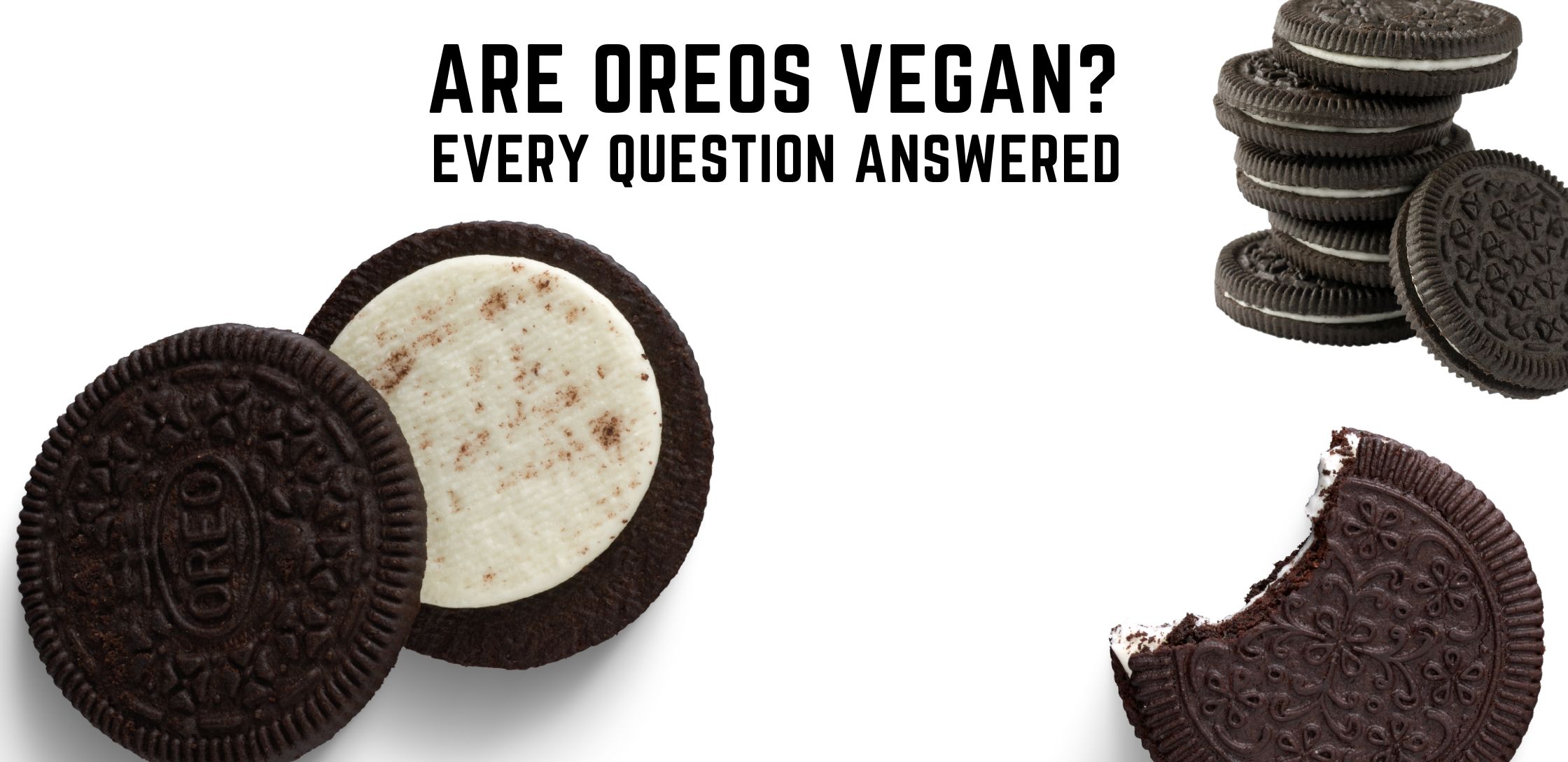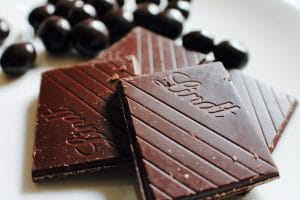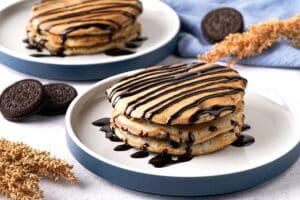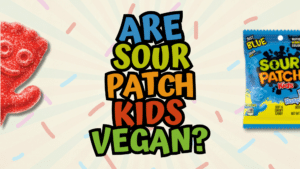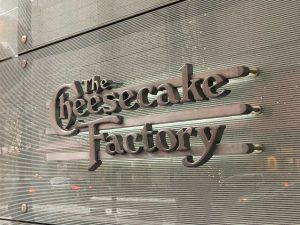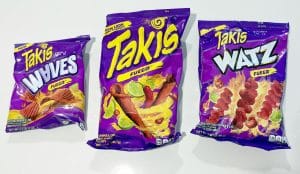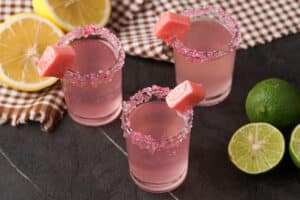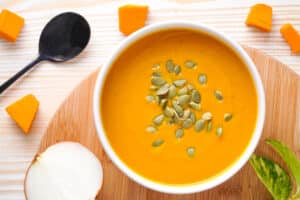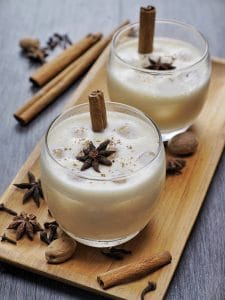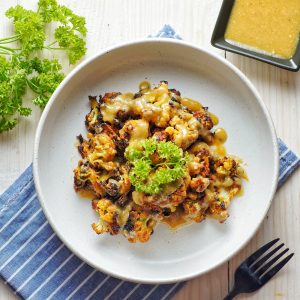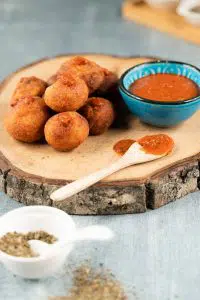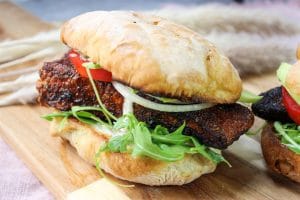Are Oreos Vegan? Every Question Answered
Important Note: When you buy through our links, we may earn a commission. As an Amazon Associate we earn from qualifying purchases. Content, pricing, offers and availability are subject to change at any time - more info.
Even though Oreos do not contain any animal products at all, there is dairy cross-contamination. Certain Oreos are mostly vegan-friendly for those who don’t mind minuscule amounts of milk, while others are a strict no-no. We’ll be taking you through a thorough look at the composition of Oreos and all the various varieties so that you know which suit your choices and eating habits.
Key Takeaways
In order to be totally transparent while also complying with all definitions of the word vegan itself, the manufacturer Mondelēz International openly states that Oreos are not vegan. Oreos don’t contain dairy unless they’re fudge or dipped, nor do they contain any other animal products, for that matter. If you don’t mind trace elements of dairy and can overlook the palm oil and bone char processing of the refined sugar used in Oreos made in America, then they’re free game as an occasional snack. If you are a strict vegan you may want to pass on this one.
The Oreo Vegan Cross Contact Warning And What It Means
Every Oreo label explicitly warns that their cookies are not suitable for vegans because they have cross-contact with milk. With all other considerations aside, this means that there are trace elements of milk due to processing in a factory that handles dairy-based ingredients. The warning is actually only typically of actual importance to people with allergies.
With this in mind, vegans who do partake should know that they are most likely consuming dairy in the process, and eating Oreos made in America also comes with the risk of the sugar being bone-char processed. We should also add that it is only US Oreos that are free from dairy. Oreos made in the UK contain milk.
What Are Oreos Made Of?
As one can read directly on the label or public nutritional information published by Nabisco, Oreo Chocolate Sandwich Cookies do not contain dairy. Oreos ingredients are listed as unbleached enriched flour specified as wheat flour fortified with niacin, reduced iron, thiamine mononitrate riboflavin and folic acid, refined sugar, palm and/or canola oil, cocoa that has been processed with alkali, high fructose corn syrup, a leavening agent stated as baking soda and/or calcium phosphate, salt, soy lecithin, chocolate, and artificial flavor.
The deep black color that Oreo wafers reach is due to the alkalinizing process that the cocoa undergoes. Upping the pH of mid-alkalinity cocoa beans improves their flavor while reducing bitterness. In the process, the color darkens. The darker the color, the lighter the intensity of the chocolate taste. Nabisco’s ‘Stuf’ or the creme within the center of an Oreo, isn’t a real cream at all but rather a substance more similar to cake icing.
Oreo Allergy Information
Despite carrying a dairy cross contamination warning, countless people with milk allergies report eating Oreos daily without any problems. With this being said, all Oreos other than Oreo Gluten Free Sandwich Cookies contain wheat and soy, which are both allergens to be noted and avoided by certain individuals.
Where Are Oreos Made?
Oreos are manufactured all around the world. In the US, massive manufacturing lines are located in Fair Lawn, New Jersey, Naperville, Illinois, and Richmond, Virginia. Unfortunately, the biscuit manufacturing technology employed also handles other products that include dairy, which results in unavoidable cross-contamination.
What Oreo Flavors Contain Dairy?
At the time of writing, none of the Oreo Thins, Oreo Original, Oreo Double Stuf, or Oreo Mega Stuf flavors directly contained dairy as an ingredient. Anyone who continues to consume Oreos despite cross-contamination with milk should always take care to avoid fudge covered and dipped varieties as they typically have dairy as a listed ingredient. Over the years, there have been more than 75 different flavors, so it is best to pay attention to the label before buying a new release.
Potentially Harmful Ingredients In Oreos & Other Concerns
It is not only the presence of animal products in the form of dairy that’s of concern to vegans and certain other health & eco-welfare-conscious individuals. Here are the main factors raised against Oreos.
Insect Derived Colorants
One of the prime concerns for vegans and vegetarians is the presence of insect-derived colorants. For example, Oreos Strawberry (like red Skittles) often relies on E120 Cochineal Carmine for its color when not made in countries that are by default Halaal compliant. E120 is made from dried crushed female Dactylopius coccus, which are tiny parasitic scale insects that live on Opuntia cacti throughout Central and South America. Females are crushed for dye whiile males are killed as the compound is too taxing to extract.
Ingredients Derived From Genetically Engineered Crops
This won’t be a concern for all, but certain individuals focused on natural living are opposed to eating Oreos due to the presence of genetically engineered crops. The beet sugar, high fructose corn syrup, and soy lecithin are all sourced from harvests that have undergone genetic engineering to improve crop health and disease resistance.
Artificial Colorants
The filling of certain flavors relies on artificial ingredients, which will deter some people from partaking. While it is very hard to eliminate artificial coloring, it remains an issue for some shoppers. Beware of the colorings in certain types of Oreos. Seasonal varieties like Oreo Birthday Cake include artificial colorants like Yellow 5, Blue 1, Red 40 and Red 3 While synthetic colors don’t get extracted from animals, they are tested on animals which is why they’re avoided by certain vegans. If artificial ingredients are an issue for you, always check the label of any prospective Oreo purchase if it’s not the original classic flavor.
Bone Char Processing Of Sugar
A large number of sugar refineries in the United States and certain other countries rely on char produced from animal carcasses to act as a decolorizing filter to whiten both brown and white refined sugar. Oreos use refined sugar that has undergone bone char filtration, which is one of the reasons that many Vegans avoid all products from Mondelēz International, the Oreos parent company.
Palm Oil
Palm oil is a core ingredient of Oreos and all other products from Mondelēz International. Vegans and other wildlife preservation/welfare-focused individuals typically avoid palm oil as it is the leading cause of orangutan extinction due to the massive rainforest destruction left behind by much of the industry. Up to 5000 orangutans are killed each year in various Palm Oil plantation expansions and harvesting operations. Oreo’s parent company guarantees its shoppers that all palm oil is sustainably sourced, but many individuals avoid all products containing palm oil completely.
Innovative Oreo Uses
Ever found yourself wondering, ‘What can I do with a bunch of Oreos?.’ The most famous sandwich cookie in the world is endlessly versatile once you start thinking outside of the box. Here’s some inspiration to kick your creative cravings into full gear.
Crunchy Oreo Lasagna – Pudding made from layers of oreo, cocoa, crumbs, and cream cheese.
Chocolate Banana Pudding – Six layers of Oreo cookies, French vanilla pudding, cream cheese, wafers, and bananas fused into a lasagna-like pie.
Oreo Surprise Cake – Cake baked using chocolate, sprinkles, devil’s food cake mix, and Oreo cookies that explodes with treats when it is sliced open.
Oreo Brownies – Incorporate Oreo cookies and chocolate chips into regular brownies. Just increase the oil or butter quantity slightly, and you’ve got a must-try treat.
Oreo Smoothies/Milkshakes – One of the best-known but tastiest ways to use Oreos is to include them into smoothies and milkshakes. Just crush the biscuits by hand thoroughly first if you plan to whip one up without a blender.
Frozen Oreos – After a tip started circulating online that freezing Oreos improves their ability to absorb and hold milk better, Nabisco soon published that while they don’t advocate the behavior, fans of the practice should try allowing their cookies to defrost in the fridge for an hour or two after freezing and before dipping to improve the results.
Fun Oreo Facts
Still, craving to know more about the world’s favorite cookie? Here are some of the most interesting facts about Oreo Chocolate Sandwich Cookies.
Oreos Are Actually a Knock Off?
Now you may be wondering, what did Oreo knock off? Four years before Oreos existed in 1908, a company called Sunshine Biscuits launched a cream-filled chocolate sandwich cook that’s almost identical to Oreos called Hydrox. The company, which was later sold to Keebler and Kellogg’s, was finally reintroduced into global markets by Leaf Brands, but Oreos are so popular that in the early years, many thought that Hydrox was the imposter.
It Is A Scientific Improbability To Split An Oreo Into Two Exact Halves
A research team headed up by a physicist named Crystal Owns at Massachusetts Institute of Technology (MIT) has studied the dynamics of splitting an Oreo while attempting to ensure that the famous ‘Stuf’ ends up with exactly half its quantity on each wafer. The study was dubbed ‘On Oreology, the fracture and flow of “milk’s favorite cookie”‘ and researchers have gone so far as to design an ‘Oreometer’ which was 3D printed to study the dimensions of round objects. The creme always sticks more to one wafer even when dipped or twisted, using exact force and experimental techniques to ensure precision.
What Was Oreos First Slogan?
The brand’s very first slogan, “Oh! Oh! Oreo,” and its accompanying jingle came into being in 1950. Several other slogans took precedence before the company struck a chord with “Milk’s Favorite Cookie in 2004.” ‘For the kid in all of us arrived in 1980. In 1982 ‘America’s Best Loved Cookie’ arrived, which was followed by ‘The One and Only’ later that same year. ‘Who’s The Kid with the Oreo Cookie?’ was next in ’86, and finally ‘Oreo, The Original Twister’ followed in 1990, just before the current slogan began to stick.
March 6th Is National Oreo Cookie Day
National Oreo Cookie Day is an unofficial holiday celebrated on March 6th in commemoration of the founding of America’s favorite cookie on March 6th, 1912. While most in the United States are well aware of this Oreo fact and entertain the holiday, various other countries have begun to show their devotion to the brand by celebrating it too.
Oreos Utilize Sustainably Sourced Cocoa
All chocolate brands and chocolate used by companies making up a part of Mondelez International are manufactured with cocoa that’s sourced from companies that are a part of the enterprise’s Cocoa Life initiative. Cocoa Life aims to empower the industry with sustainable business practices. By 2025 all Oreo chocolate, as well as the chocolate in other brands like Cadbury, will be sustainably sourced.
Oreo FAQ
Still, wondering anything about Oreos? This selection of answers to frequently asked questions will resolve any lingering queries.
There used to be! Nabisco at first included lard (which is better known as pig fat) in their original recipe for their Oreo Crème filling called ‘Stuf.’ However, at some point during the nineties, the company switched to using partially hydrogenated vegetable oil, which means that Oreos no longer directly contain animal products.
Original Oreos and all the extra flavors that aren’t explicitly marked otherwise are not gluten-free. By definition, standard Oreo flavors are all made using wheat flour. Nabisco did, however, launch gluten-free Oreos suitable for Celiac sufferers right at the very start of 2021. Instead of unbleached, enriched flour, gluten-free Oreos are made using a combination of white rice flour and whole oat flour.
Cross-contamination with dairy makes Oreos harem not halal. Most Oreos are thus not suitable for Islamic individuals, and those manufactured in the USA, Canada, and the UK are most definitely not suitable for consumption by members of the Muslim community. Original Oreo biscuits and certain other in other countries like Saudi Arabia, South Africa, Indonesia, Pakistan, Egypt, and Bahrain are Halal-certified. This includes Oreo Original, Chocolate, Golden, Peanut Butter, and Oreos dipped in chocolate which contain dairy in the US and Canada.
Most Oreos are Kosher. Since 1998, classic Oreos and the majority of flavor variations in the United States and the United Kingdom, as well as various other regions, have been kosher certified. The certification is not carried by all variations, so always look for the clearly displayed OU Kosher symbol before buying if this is a requirement for you and your family.
All Oreos, with the exception of Chocolate Oreos, Golden Oreos, Peanut Butter Oreos, and Oreos dipped in chocolate, are free from dairy in the United States and Canada as well as most other countries. All Oreo varieties are, however, processed using machinery that also handles dairy and foods containing dairy products. This is why classic Oreos and most others display a cross contamination warning.
There are absolutely no nuts in Oreos. The manufacturer guarantees that all product lines are dedicated as nut-free, which means there’s no risk of cross-contamination and zero trace elements of nuts.
Oreos include the emulsifier soy lecithin, which has been extracted from soybeans. The only variety of Oreos that does not include soy is Oreo Thin Crisps – the entire range is soy-free and safe for those with a soy allergy.
Oreos are totally egg-free. All varieties are free from animal products other than Chocolate Oreos, Golden Oreos, Peanut Butter Oreos, and Oreos dipped in chocolate which contain milk and/or dairy derivatives.
There is no gelatin in any variety of Oreos. The vast majority of flavors, including classic Oreos, do not contain any dairy or animal products whatsoever. It is only the risk of cross-contamination with milk that makes Oreos unsuitable for strict vegans.
As advertised, Oreos are made with real sustainably sourced cocoa, but it’s not unprocessed. In order to make the mild, smooth chocolately flavor that we know and love, Oreos use cocoa that has been alkalinized. This chocolate is referred to as ‘Dutch Process Chocolate’ within the culinary world.
